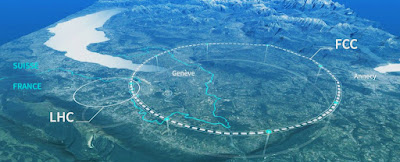Large urban and wildland fires can result in fire tornadoes, sometimes known as “fire whirls,” which are dangerous and virtually uncontrollable threats to people, property, and the environment. However, a group of researchers at the University of Maryland (UMD)’s A. James Clark School of Engineering say their discovery of a particular sort of fire tornado they refer to as a “blue whirl” could result in useful new methods for reducing carbon emissions and improving oil spill cleanup.
This newly discovered flame phenomenon, which burns almost soot-free, is described in a new research that was published online on August 4th, 2016 in the peer-reviewed journal Proceedings of the National Academy of Sciences (PNAS).
“Traditional yellow fire whirls give way to blue whirls. Elaine Oran, the co-author of the study and Glenn L. Martin Institute Professor of Engineering explained that the yellow color is a result of radiating soot particles, which form when there is not enough oxygen to thoroughly burn the fuel. The presence of blue in the whirl shows that there is sufficient oxygen for complete combustion, which results in minimal or no soot and a cleaner burn.
The initial goal of the Clark School team was to look at the combustion and burning dynamics of fire whirls on water. What they found was a new, whirling blue flame that, according to their research, may be able to satisfy the rising global need for high-efficiency, low-emission combustion.
“A fire tornado has a long history of being associated with destruction and extreme fear. Can you, like with electricity, use it for good? According to co-author and assistant professor of fire prevention engineering Michael Gollner, “If we can comprehend it, then perhaps we can control and exploit it.
 |
| Credit: University of Maryland |
The study of fire whirls for practical purposes has never been done before, according to Gollner.
Some oil spill cleanup methods involve gathering the crude oil into a thick layer that can be burned right there on the water’s surface, however, the ensuing fire is smoky, ineffective, and insufficient. Blue whirls, according to the Clark School researchers, could enhance remediation-by-combustion methods by more effectively burning the oil layer and lowering harmful emissions into the atmosphere surrounding it and the water below it.
“Fire whirls are more effective than other types of combustion because they produce significantly more heating at the fuel surface, causing the fuel to burn more quickly and thoroughly. We’ve seen in our studies over water that the circulation that fire whirls produce also aids in bringing fuels into the flames. We can further minimize airborne pollutants for a far cleaner method of spill cleanup if we can produce a state similar to the blue swirl at a bigger scale, according to Gollner.
The team hopes that their discovery of the “blue swirl” can serve as a natural research platform for the investigation of vortices and vortex breakdown in fluid mechanics because, aside from improvements in fuel efficiency and oil spill cleanup, there are currently few simple methods to generate a stable vortex in the lab.
Huahua Xiao, an assistant research scientist at the Clark School’s Department of Aerospace Engineering and the paper’s corresponding author noted that whereas a fire whirl often exhibits turbulence, this blue whirl is extremely quiet and steady and shows no signs of turbulence either visually or audibly. It’s a very remarkable discovery that opens up significant opportunities both inside and outside of the research lab.




